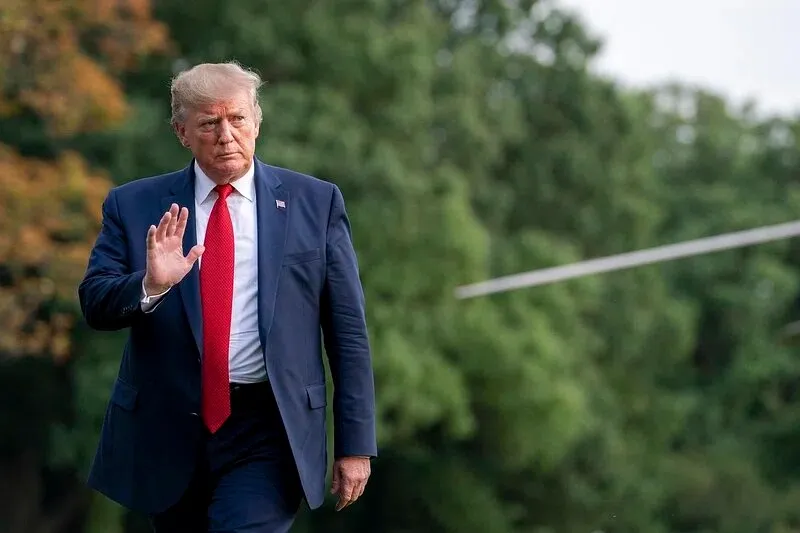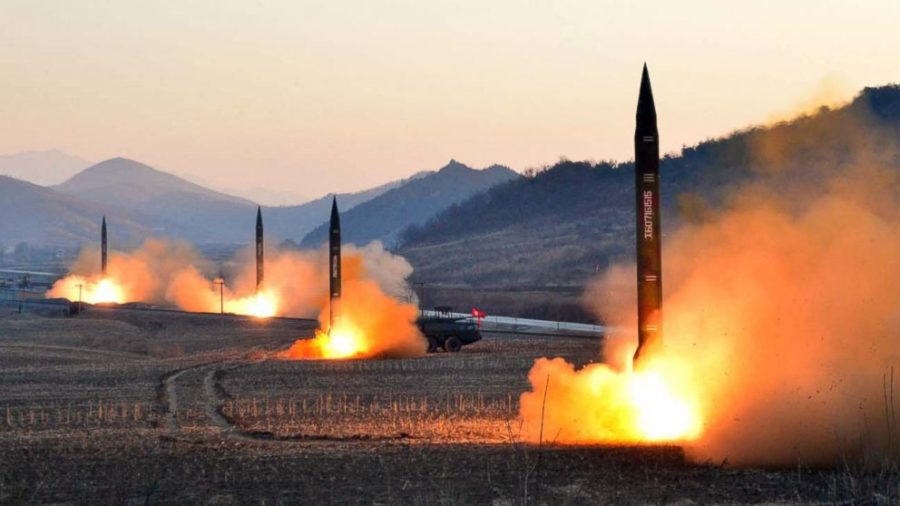Tensions Escalate With North Korean Weapons Tests
October 27, 2022
Starting on September 25, 2022, North Korea has begun to resume weapons tests near South Korean borders, suggesting that the nation may be using provocative weapons tests in order to coerce concessions from nearby countries. A major part of these weapons tests involved short-range, long-range cruise, and ballistic missile launches, of which there were a total of 15 as of Friday, October 14. North Korea stated that these launches were designed to simulate nuclear strikes against South Korea and the U.S., partially in response to the recent redeployment of the USS Ronald Reagan, an aircraft carrier, to the region.
At the same time, and slightly after these missile tests, North Korea also began firing rounds of shells off of the nation’s coastline, with 130 rounds fired off the west coast, and 40 to the east. According to South Korea’s Joint Chiefs of Staff, 90 additional artillery launches were detected from the east coast, along with over 300 from two separate spots on the west coastline.
The third type of maneuver perceived to be threatening occurred when North Korean fighter jets approached the northern part of the Demarcation Line, marking the center of the Demilitarized Zone, and the border between the two Koreas. Reaching a distance of only 7.5 miles, the closest North Korean aircraft have been to the area since 2017, South Korea scrambled the planes in response to the military action.
The primary threat with these launches, particularly of long-range cruise missiles and intermediate-range missiles, is the threat of nuclear warfare. Following one of the more recent launches, Kim Jong Un, the leader of North Korea, stated that the nation was ready for “actual war to bring enemies under their control at a blow,” along with promising to continue developing a nuclear arsenal. North Korea also recently passed a law permitting the use of preemptive nuclear strikes in a broader range of non-war situations, including when the country believes its leaders to be threatened. This has prompted some South Korean leaders to call for the U.S. to redeploy tactical nuclear weapons to South Korea in an effort to deter North Korean attacks.
In 2018 an agreement was made between North and South Korea for there to be buffer zones and no-fly zones. Along borders by both land and sea, these areas were created in order to ease military tensions and prevent accidental crashes between weapons or vessels in the region. The recent launches by North Korea have broken the 2018 agreement, as some shells were believed to have been fired into one or more buffer zones. Additionally, some of the missile tests involved ballistic missiles, which are banned by UN Security Council resolutions, although no sanction-based retaliation has occurred yet due to the current war in Ukraine.
Even though the UN hasn’t responded to North Korea’s recent actions, South Korea has placed sanctions on 16 different organizations, along with 15 individual people. All of those sanctioned were supposedly involved in either financing illegal development programs for nuclear weapons or other weapons of mass destruction or helping the nation to avoid UN sanctions. However, these sanctions are more symbolic than anything else given the currently infrequent trade and financial exchange between the two countries. In order to discourage future attacks, South Korea distributed “a stern warning to (North Korea) to immediately halt” weapon testing via televised message, according to Maj. Gen. Kang Ho Pil. Also, the South Korean military has invited some U.S. troops to participate in this year’s annual 12-day field training, again hoping to send a cautious message to its northern neighbor.




















































